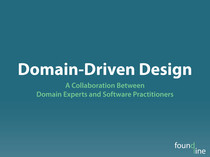Wow, thank you to everyone who participated and helped make Town Meeting Day Vermont ’09 a social media success! In the spirit of openness, I wanted to share some things that Jason and I learned from the tmdvt.net/09 experiment. First of all, some disclaimers. It’s important to note that we were just one small part of something that was bigger than us. Our goal was to encourage people to use tagging on Twitter, Flickr, blog posts indexed by Technorati, YouTube, and Delicious so that others could easily find Town Meeting Day related content. It didn’t matter to us if people used tmdvt.net/09 directly, what mattered was that people used the relevant tags when publishing or when searching. In fact, I doubt that tmdvt.net/09 had much of an effect on adoption of the #tmdvt hashtag on Twitter, which was the site that, by far, had the most tagging activity.
Before you continue reading the rest of this blog post, you should read my first post on Town Meeting Day Vermont, Bill Simmon’s Town Meeting Day & social media, Cathy Resmer’s Town Meeting Day 2009, and Ryan Freebern’s Townsourcing; or, the promise of localized community media for some background and other perspectives… OK, back? Great!
A big thing we noticed was that since most users found out about tmdvt.net/09 through Twitter, they expected the same level of immediacy as Twitter from the other websites we aggregated. Flickr, Technorati, and YouTube all had delays that were longer than what users expected. Delicious bookmarks didn’t show up immediately but were still relatively quick. We couldn’t quite figure out why some of the content from Flickr was delayed. It seemed to be based on a variety of factors, such as the account’s submission frequency (possibly as an anti-spam measure).
As I mentioned earlier, the heaviest tag usage was on Twitter with over 360 tweets from countless people using the #tmdvt hashtag. Next up was Flickr with over 150 uploads tagged with tmdvt09 from a handful of users. Only 6 blog posts used the tmdvt09 tag and were picked up by Technorati: 1 was my original post about the tag, 1 was from Vermont Public Radio’s blog, and 4 were from The Seven Days Staff Blog. I think there were more blog posts that used the tmdvt09 tag, but for whatever reason these didn’t get indexed. Only 2 YouTube videos were uploaded and tagged with tmdvt09. There were 21 bookmarks tagged with tmdvt09 on Delicious; however, none were tagged enough to be considered “popular” by Delicious.
CCTV Channel 17 pointed out that they were posting exit interviews to blip.tv and that there was no option for that on tmdvt.net/09. It appears that blip.tv doesn’t support tagging or categorized feeds so we had no way of syndicating content specific to Town Meeting Day from blip.tv or CCTV’s channel. However, a representative from blip.tv was paying attention and was quick to respond to my tweets, which I was very impressed by.
I was also impressed with local news outlets bridging the gap between traditional and social media during Town Meeting Day. Seven Days, Burlington Free Press, Vermont Public Radio, Vermont Community Access Media, and CCTV Channel 17 all had a presence on Twitter, and some had a presence in other social media as well. I had conversations with representatives from several of these news outlets and there was a general interest in further engagement in tmdvt.net/10.
The original sketch for tmdvt.net/09 included tabs for traditional media outlets in addition to the tabs for various social media websites. I don’t think social media will replace traditional media. Traditional media provides the resources (i.e. time and money) to do real reporting and the authority that comes with that legwork. I do, however, believe that traditional media and social media can learn a lot from each other, which is part of why we wanted to put them at the same level on tmdvt.net/09.
In order to include traditional media, we needed Atom or RSS feeds specific to Town Meeting Day content. In my research, and in talking with several people from the media, I couldn’t find anyone who was currently doing this. The Seven Days Staff Blog was the closest with their Town Meeting Day 2009 category. However, they didn’t have an Atom or RSS feed set up for this category, so it would have been very difficult for me to try to aggregate that content. My challenge to the news media is to provide more fine grained feeds so that your readers can decide exactly what type of stories they’re interested in reading. It will likely increase the number of people who subscribe to your Atom or RSS feeds and allow people like me to make mashups using your content.
I think there is a lot to be learned from this experiment and I’d love to hear what insight others may have about this. Let’s continue the discussion online. Also, it might be interesting to have an offline discussion sharing perspectives from this year’s Town Meeting Day and ideas for similar events in the future. If you’re interested, let me know!




